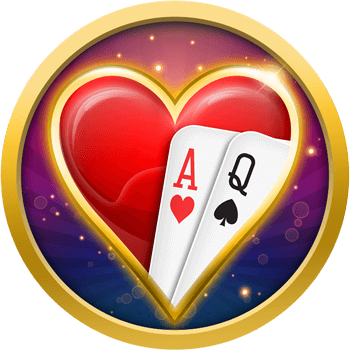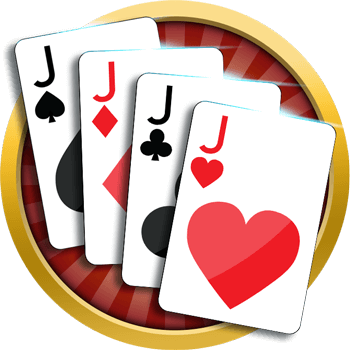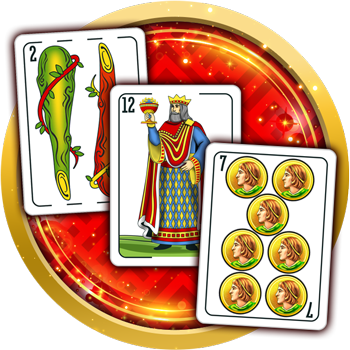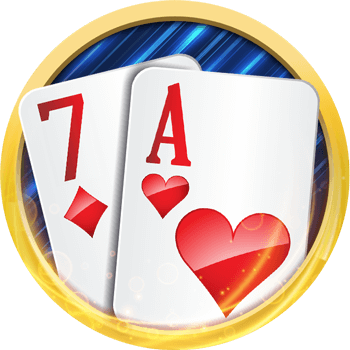Play ESCOBA Online
Home »
Escoba, especially the variant “Escoba de 15” is very popular in Spain and Argentina. The name of the game comes from the fact that you have to sweep the open cards, capturing all of them. Escoba is very similar to the Italian game called “Scopa”, particularly to the variation “Scopa a Quindici”.
The main goal is to combine one of your cards with some of cards on the table, so that the sum of the captured cards is 15. When you make 15 with all the cards you will have an ”escoba”.
The game is interesting because making escoba is not the unique target. As a final objective the players should make in total more points than the opponents. The details about scoring and points you can see below.
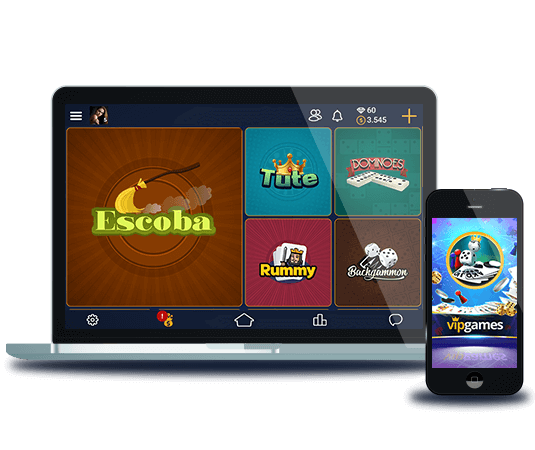
Game Objective and Rules
Players and cards
Escoba is a game for two, three or four players. In the four-player mode, it can be played individually or in teams.
Traditionally, a Spanish deck with 40 cards is used. The suits in the decks are named Coins, Cups, Batons, and Swords. The cards in each suit are 1, 2, 3, 4, 5, 6, 7, Jack, Horse, and King.
Card Values
In Escoba, the cards have the following values:
- Cards from 1 to 7 score their nominal values.
- Jack is 8 points.
- Horse is 9 points.
- King is 10 points.
For a novice player it could be confusing to play at the beginning, since the values of some cards are different than the numbers displayed on these cards.
To avoid confusion when playing Escoba, you should remember the following:
- The Jack card is marked 10, but it is worth 8 points.
- The Horse card is marked 11, but it is worth 9 points.
- The King card is marked 12, but it is worth 10 points.
Dealing
The dealer gives 3 cards initially to all players; also, the dealer places 4 cards face-up on the table. Each player can only see the cards in his hand, and also the cards face-up on the table.
The remaining cards from the deck are kept aside. They would be used later in the round. You can see the number of cards in the deck displayed on top of it.
Playing the cards
Players play in turn (in a counter-clockwise direction), each one placing a card on the table trying to capture some of the cards on the table and make a trick. Players must always play a card – if it does not capture other cards it remains on the table.
After playing the 3 cards they have, the players obtain 3 more cards from the deck and continue playing. This goes on until all cards are played.
When the final card is played one of the following happens:
– If the last card captures all available cards (making escoba), they go to the last player.
– If one or more cards remain on the table, they are automatically taken by the player who most recently captured cards.
Capturing and discarding
Trick-taking (capturing) is based on the card value; the suit is not relevant for capturing. You select a card from your hand, and then select one or more of the cards on the table. Your goal is selecting cards so that the sum of their values is 15. If you make a correct selection, you would capture all the selected cards.
For example, there is a 5 of cups card (value: 5) on the table. You select it, and then you select the King of swords (value: 10) from your hand. Since the sum of the card values is 15 (5+10), you would capture the 5 and King cards.
Playing a card that captures is not mandatory. If you cannot find how to make a capture, you should discard one of your cards by selecting it and then choosing the “Discard” button.
Specific combinations
Escoba
It could happen the card you play captures all cards on the table. This is called “escoba”, and brings a point to your score. The player playing after you would only be able to discard a card on the table, since there would be no cards for capturing.
Escoba in dealing
In the beginning of the game – after the cards are dealt and before the first player’s turn starts – it could happen that the four cards on the table form one or two combinations are 15 points. Here are two examples:
- 3-5-6-1: the sum of all cards is 15.
- 7-8-9-6: there are two pairs of cards (7+8, 6+9) that form combinations to 15.
This situation is called ‘Escoba in dealing’.
If the corresponding game option is configured for the game room, then the following would happen:
- Automatically capturing of the cards on the table from the dealer.
- When 1 or 2 escoba are made they will be counted for the dealer.
- Then the first player in the round should discard a card, since there would be no cards to capture.
Renuncio
It could happen that the card discarded by the player before you can be used to capture other cards on the table. That is, this player missed making a capture, and now there are a few cards on the table that sum to 15. If you observe this, you can choose the “Take” button and take the missed capture. After that you should play a card as usual.
In case you do not take the missed capture, then players after you can take it (until it is on the table).
Escoba in hand
When the 3 cards you have in your hand sum to 15, the “Escoba in hand” button displayed below your cards would become active. If this game option is active for the game room, then when you choose the displayed button,then:
- You would perform a capture with all cards in your hand.
- This would count as escoba.
- You would skip the next two turns, since there would be no cards in your hand.
- When the time comes for the players to receive 3 new cards from the deck (if any), you would receive your cards and continue playing as usual.
Scoring
At the end of a hand each team scores point as follows:
- Capturing more cards: 1 point.
- Capturing more 7 cards: 1 point.
- Capturing the 7 of Coins card: 1 point.
- Capturing more cards from the Coins suit: 1 point.
- For each escoba: 1 point.
When the “Most sevens” option for the game room is set to “Seventy”, the point for capturing more 7 cards would go to the party with the higher Prime value. This value is calculated in the same way as the Primiera value in the Scopa game.
If the “All sevens and coins value” option for the game room is set to “2”, the teams would score points for “Capturing more 7 cards” and “Capturing more cards from the Coins suit” parameters in a different way:
- If a team captures most – but not all – of the cards for a parameter, it would score 1 point as described above.
- If a team captures all of the corresponding cards for a parameter, it would score 2 points.
Winning
The game session ends when a player or team reaches or exceeds the number of points established in the room options, for example, 11.
If both parties reach the 11 points limit and have the same score, then the winner is determined by comparing the results from the rounds. The checks below are performed in the order in which they are listed, until one of them shows there is a winner:
- A number of escobas made during all hands.
- Points won in all hands for most cards of the coins suit.
- Number of points won in all hands for getting the “seven of coins” card.
- The number of points won in all hands for getting more cards.
Finally, if both parties have equal parameters, they would play further rounds until at the end of a round one of the parties meets the criteria for winning described above (more points, or better parameters).

